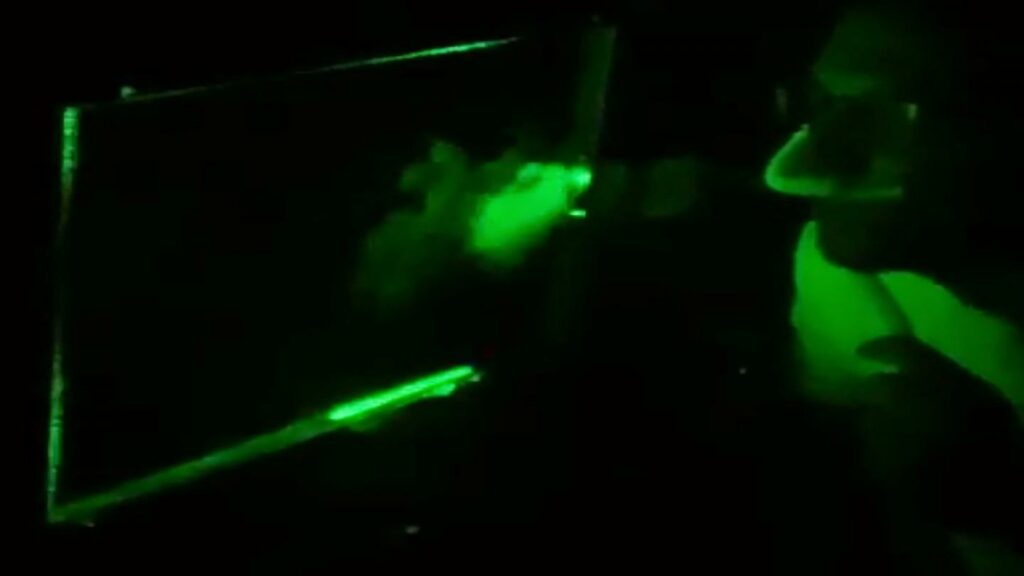While COVID-19 could be passed through aerosols, this likely doesn’t happen very often.

Finally, some good news for a change
The word ‘droplet’ suddenly became popular during spring. The reason was pretty straightforward: SARS-CoV-2, the novel coronavirus, spread through droplets. But this turned out to not be the whole story.
In the summer months, it became increasingly apparent that the virus can also be passed through aerosols (essentially very small particles in suspension). These aerosol particles are much smaller than droplets and they can stay in the air for hours and travel farther — which brings a world of new problems regarding viral transmission. This too turned out to be only a part of the story.
A new study carried out by researchers at the University of Amsterdam’s Van der Waals-Zeeman Institute suggests that aerosol microdroplets can carry the virus, but they’re not very good at it, especially in well-ventilated buildings.
It’s probably the first study of this type, says group leader Daniel Bonn in an email.
“I don’t really know of ‘previous studies’ [like this one]. There are case studies such as the restaurant in China (Zhangzou), but as far as I know there was no real risk assessment there,” says Bonn.
Bonn worked with a mixed team of physicists and medical doctors. They used laser technology to quantify the risk of aerosol spread and how much the aerosols linger in the air and have a risk of transmitting SARS-CoV-2. They also aimed measure the distribution of droplets released when people speak or cough. Test subjects spoke or coughed into a laser beam and a jet nozzle was used to mimic tiny aerosol microdroplets. This allowed researchers to measure how droplets spread and how likely they are to pass along SARS-CoV2.
“The purpose of our research was to quantify the risks of aerosol spreading by measuring and modelling their persistence. With the current knowledge about the virus, we find that the risk is real, but not very large. This is because the aerosol droplets are so small that they contain a relatively small amount of virus,” says Bonn.
Based on the study results, as long as buildings are well-ventilated the risk of aerosol droplets passing the virus is relatively low — not nonexistent, mind you, just low.
For instance, if someone enters a space a few minutes after a coronavirus carrier has coughed in the area, the risk of infection is not substantial, and if the carrier was only speaking, it’s even lower, because the larger droplets fall to the ground and the aerosol droplets are ventilated.
It’s still hard to define exactly what “low risk” means, but even this imperfect information is very important because it can tell authorities where to focus prevention efforts and help with indoor risk assessment.
“The fact that we can do that now — even though only approximately, since we do not yet know everything there is about the virus — helps [us] to do a risk assessment of different environments. In many countries there is a government rule about the number of Air Changes/hour (ACH) that buildings have to have. In most modern buildings an ACH of about 4 or higher is done, and in that case, we find that the aerosols do not persist for a long time.”
“The public should of course continue social distancing and hand cleaning, and for the aerosols to critically look at the ventilation capacity of their working and living environment. Too many active (speaking, singing, shouting) people in ill-ventilated environments pose a problem, and so this should be avoided this winter.”
The findings also reinforce the importance of existing prevention measures like wearing masks and social distancing. The larger droplets that are more likely to carry the virus quickly fall onto the ground within 1-1.5 meters (3-5 feet).
“If you want to minimize the risk of infection, you need to not only keep the 6 feet, or 1.5 meters, but also make sure the room you are in is well ventilated. And wash your hands.”
Journal Reference: “Aerosol persistence in relation to possible transmission of SARS-CoV-2” by Daniel Bonn, Scott H Smith, Aernout Somsen, Cees van Rijn, Stefan Kooij, Lia van der Hoek and Reinout Alexander Bem, Physics of Fluids. DOI: 10.1063/5.0027844


